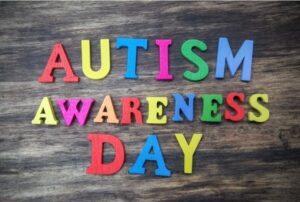Tonsil removal, or tonsillectomy, is one of the most common surgical procedures for children. It involves the removal of the tonsils, which are located at the back of the throat. Tonsils play a role in the body’s immune system, but for some children, they can become problematic due to frequent infections or obstructive sleep issues. If you're a parent considering tonsillectomy for your child, it's crucial to weigh the pros and cons before making a decision. Here's what you should know.
What Are Tonsils and Why Are They Removed?
Tonsils are part of the lymphatic system, which helps fight infection. They act as the body's first line of defense against bacteria and viruses that enter through the mouth or nose. However, some children experience frequent tonsil infections (tonsillitis) or have enlarged tonsils that block airflow, leading to breathing issues, especially during sleep.
Tonsillectomy is generally recommended when:
- A child has recurrent or chronic tonsillitis.
- Enlarged tonsils are causing obstructive sleep apnea or snoring.
- The child experiences difficulty swallowing or breathing because of the size of their tonsils.
- Antibiotic treatments are not effective for recurring infections.
The Pros of Tonsil Removal in Children
- Improved Quality of Life
Children with frequent tonsillitis or obstructive sleep apnea often face disrupted sleep, sore throats, and difficulty swallowing. After tonsil removal, many parents report significant improvements in their child's sleep quality, mood, energy levels, and overall well-being. - Fewer Infections
One of the primary reasons for tonsil removal is to reduce the frequency of infections. Children who experience multiple bouts of tonsillitis yearly often see a dramatic reduction in throat infections post-surgery. - Better Breathing
For children with enlarged tonsils causing obstructive sleep apnea, a tonsillectomy can resolve sleep-disordered breathing. This leads to improved oxygen levels during sleep, better concentration during the day, and improved growth in some cases. - Less Time Off School
Children who frequently get tonsillitis may miss numerous days of school. With fewer infections and quicker recovery times post-tonsillectomy, kids are likely to have better school attendance.
The Cons of Tonsil Removal in Children
- Surgical Risks
Like any surgery, tonsillectomy carries risks. Though rare, complications can include bleeding, infection, adverse reactions to anesthesia, or injury to nearby tissues. It’s important to weigh these risks, especially if your child has other health concerns. - Post-Surgery Pain and Recovery
After surgery, children typically experience a sore throat, which can last for 10 to 14 days. Pain management, often with prescribed medication or over-the-counter remedies, is necessary during recovery. Children may also have difficulty eating or swallowing, which can lead to dehydration if not monitored. - No Absolute Immunity From Future Infections
While tonsillectomy significantly reduces throat infections, it doesn’t guarantee that a child will never get a sore throat again. Other parts of the immune system, like the adenoids or lymph nodes, may still become inflamed or infected. - Potential for Voice Changes
Some parents report that their child's voice changes slightly after tonsil removal. While this isn't common, it can happen due to alterations in the airflow through the throat after the procedure.
What Parents Should Know
Before considering tonsil removal for your child, consult with an ENT (ear, nose, and throat) specialist. They will likely assess the frequency of infections, the size of the tonsils, and how much the condition impacts your child’s overall health and quality of life.
Here are some questions to ask your doctor:
- How many infections has my child had in the past year?
- Is sleep apnea a concern?
- Are there alternatives to surgery?
- What does the recovery process involve?
- What are the risks of surgery in my child's case?
Post-Tonsillectomy Care
Recovery from tonsil removal takes about two weeks. During this time, it's important to follow these guidelines:
- Hydration: Encourage your child to drink plenty of fluids to avoid dehydration, especially as swallowing may be painful.
- Soft Foods: Serve soft or cold foods like yogurt, applesauce, and ice cream to soothe the throat.
- Rest: Limit your child's physical activity for the first two weeks after surgery.
- Pain Management: Use prescribed or over-the-counter medications as advised by your healthcare provider to manage pain.
Most children recover without complications and experience lasting benefits, such as better sleep and fewer infections.
When to Seek Immediate Medical Attention Post-Surgery
While tonsillectomy is a routine procedure, there are instances where you may need to contact a doctor after the surgery:
- Severe or excessive bleeding.
- High fever.
- Difficulty breathing or swallowing.
- Signs of dehydration (such as a lack of urination).
Key Takeaways
Tonsil removal in children offers many benefits, particularly for those who suffer from frequent tonsil infections or sleep apnea. However, as with any surgery, it comes with its risks. By understanding the pros and cons and discussing them with your healthcare provider, you can make an informed decision about whether tonsillectomy is the best choice for your child.













